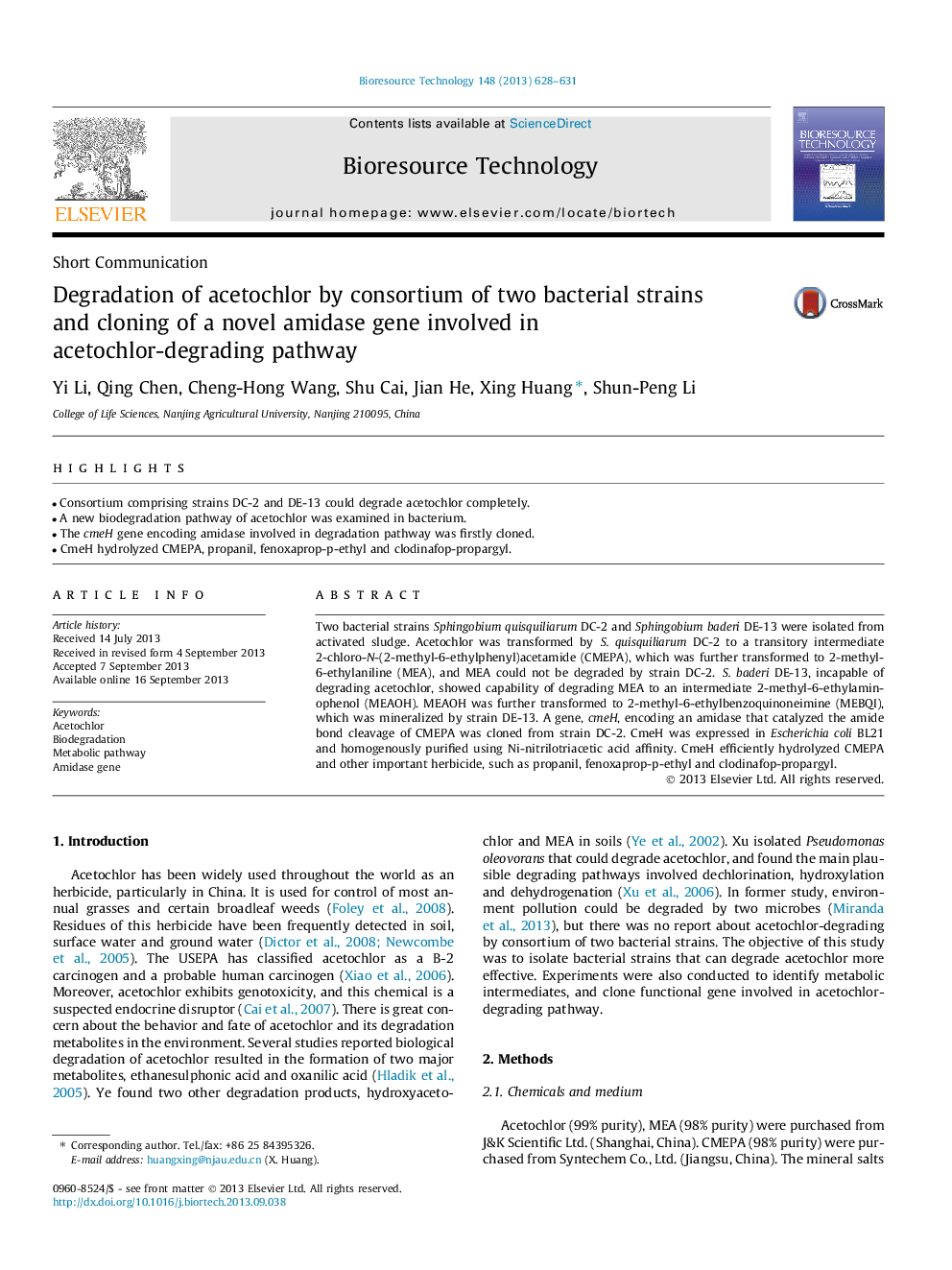| Article ID | Journal | Published Year | Pages | File Type |
|---|---|---|---|---|
| 7080391 | Bioresource Technology | 2013 | 4 Pages |
Abstract
Two bacterial strains Sphingobium quisquiliarum DC-2 and Sphingobium baderi DE-13 were isolated from activated sludge. Acetochlor was transformed by S. quisquiliarum DC-2 to a transitory intermediate 2-chloro-N-(2-methyl-6-ethylphenyl)acetamide (CMEPA), which was further transformed to 2-methyl-6-ethylaniline (MEA), and MEA could not be degraded by strain DC-2. S. baderi DE-13, incapable of degrading acetochlor, showed capability of degrading MEA to an intermediate 2-methyl-6-ethylaminophenol (MEAOH). MEAOH was further transformed to 2-methyl-6-ethylbenzoquinoneimine (MEBQI), which was mineralized by strain DE-13. A gene, cmeH, encoding an amidase that catalyzed the amide bond cleavage of CMEPA was cloned from strain DC-2. CmeH was expressed in Escherichia coli BL21 and homogenously purified using Ni-nitrilotriacetic acid affinity. CmeH efficiently hydrolyzed CMEPA and other important herbicide, such as propanil, fenoxaprop-p-ethyl and clodinafop-propargyl.
Related Topics
Physical Sciences and Engineering
Chemical Engineering
Process Chemistry and Technology
Authors
Yi Li, Qing Chen, Cheng-Hong Wang, Shu Cai, Jian He, Xing Huang, Shun-Peng Li,
